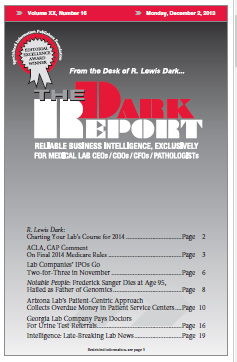CEO SUMMARY: On November 27, as the nation prepared for the Thanksgiving holiday, the federal Centers for Medicare & Medicaid Services (CMS) announced the long-awaited final rules for 2014. Early analysis of the 1,300 pages of rules CMS released indicates that the agency moderated one of its proposals to cut back what pathologists and clinical …
ACLA, CAP Comment on Final 2014 Medicare Rules Read More »
To access this post, you must purchase The Dark Report.


